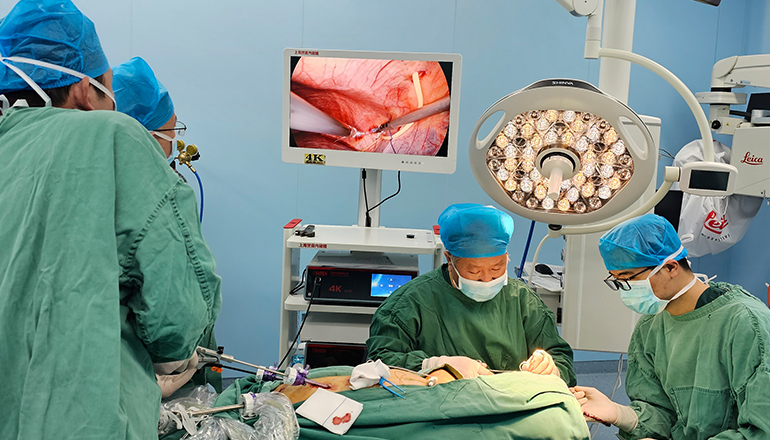- Shanghai, China
- [email protected]
- +86-21-58189111
Cranioplasty and brain view laparoscopic drainage are two medical procedures that are often performed together to address certain neurological conditions.
Cranioplasty is a surgical procedure in which a damaged or missing piece of skull is replaced with a synthetic or natural implant. This procedure is commonly performed after a traumatic brain injury or after a previous craniectomy, which is the removal of a portion of the skull for medical reasons. The goal of cranioplasty is to restore the shape of the skull, protect the underlying brain, and improve the patient's quality of life.
Brain view laparoscopic drainage, on the other hand, is a minimally invasive surgical technique used to drain excess cerebrospinal fluid (CSF) from the brain. This procedure involves the insertion of a small camera and specialized instruments through a small incision in the skull. The camera allows the surgeon to view the inside of the brain and locate the area where the excess CSF is accumulating. The surgeon can then use the instruments to create a small hole in the ventricles of the brain, allowing the excess fluid to drain out of the brain and into the abdominal cavity, where it can be absorbed by the body.

These two procedures are often performed together when a patient has suffered a traumatic brain injury or other neurological condition that has caused damage to the skull and brain. Cranioplasty is performed to repair the damaged skull and protect the brain, while brain view laparoscopic drainage is used to relieve pressure on the brain caused by the accumulation of excess CSF.
The combination of these two procedures offers several benefits. First, both procedures are minimally invasive, which means that patients can typically recover more quickly and experience fewer complications than with traditional open surgery. Second, the procedures can be performed in the same surgical session, reducing the amount of time the patient spends under anesthesia and in the hospital. Finally, by addressing both the skull and brain in a single procedure, doctors can ensure that the patient receives comprehensive care for their neurological condition.
Cranioplasty and brain view laparoscopic drainage are two complementary procedures that are often used together to treat neurological conditions. These minimally invasive techniques offer several benefits, including faster recovery times, fewer complications, and comprehensive care for patients. If you or someone you know is experiencing a neurological condition that may require these procedures, speak with a healthcare professional to learn more about your treatment options.
It is important to note that while these procedures offer many benefits, they are not appropriate for every patient or every neurological condition. The decision to perform cranioplasty and brain view laparoscopic drainage must be made on a case-by-case basis, taking into account the patient's medical history, current health status, and the specific neurological condition being treated.
Patients who undergo cranioplasty and brain view laparoscopic drainage will require close monitoring after the procedure to ensure that the healing process is proceeding as expected. They may experience some discomfort, swelling, or other side effects in the days and weeks following the surgery, but these symptoms can typically be managed with medication and proper care.
Overall, cranioplasty and brain view laparoscopic drainage are valuable tools in the treatment of neurological conditions that affect the skull and brain. These procedures offer many benefits to patients, including faster recovery times, reduced complications, and comprehensive care. If you or someone you know is considering these procedures, speak with a healthcare professional to learn more about the potential risks and benefits and to determine whether they are appropriate for your individual needs.
Leave a Comments